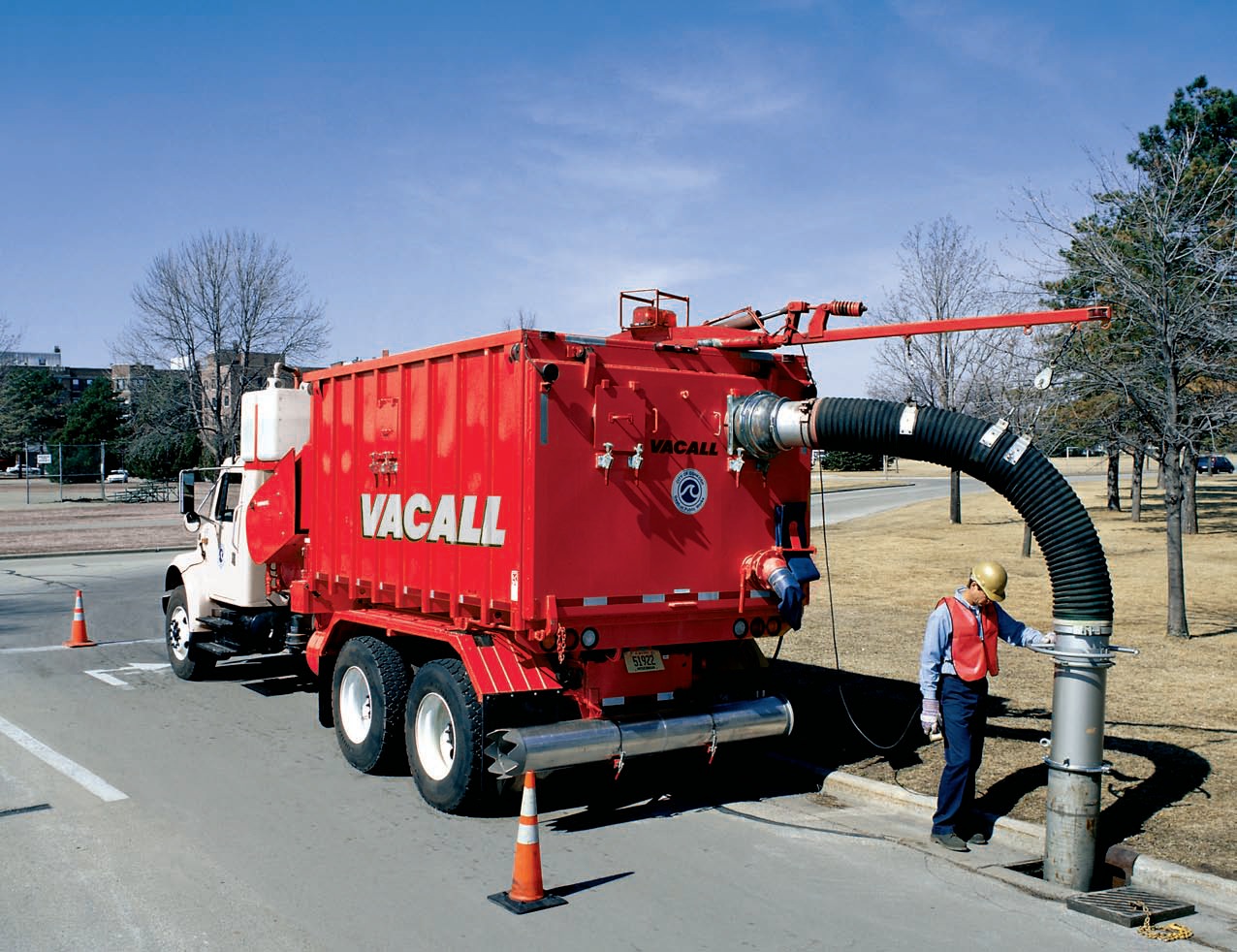Catch Basin Maintenance
Maintenance Procedures

Typical maintenance of catch basins includes trash removal if a screen or other debris capturing device is used, and removal of sediment using a vactor truck. Operators need to be properly trained in catch basin maintenance. Maintenance should include keeping a log of the amount of sediment collected, and the data of removal. Some cities have incorporated the use of GIS systems to track sediment collection, and to optimize future catch basin cleaning efforts.
One study (Pitt, 1985) concluded that catch basins can capture sediments up to approximately 60% of the sump volume. When sediment fills greater than 60% of their volume, catch basins reach steady state. Storm flows may then bypass treatment as well as re-suspend sediments trapped in the catch basin. Frequent clean-out can retain the volume in the catch basin sump available for treatment of stormwater flows.
At a minimum, catch basins should be cleaned once or twice per year. Studies suggest that increasing the frequency of maintenance can improve the performance of catch basins, particularly in industrial or commercial areas. One study of sixty catch basins in Alameda County, California, found that increasing the maintenance frequency from once per year to twice per year could increase the total sediment removed by catch basins on an annual basis (Mineart and Singh, 1994). Annual sediment removed per inlet was 54 pounds for annual cleaning, 70 pounds for semi-annual and quarterly cleaning, and 160 pounds for monthly cleaning. For catch basins draining industrial uses, monthly cleaning increased total annual sediment collected to six times the amount collected by annual cleaning (180 lbs. versus 30 lbs.). These results suggest that, at least for industrial uses, more frequent cleaning of catch basins may improve removal efficiency. However, the cost of increased operation and maintenance costs needs to be weighed against the improved pollutant removal. For more information, see the Center for Watershed Protection’s The Value of More Frequent Cleanouts of Storm Drain Inlets, Article 122.
In some regions, it may be difficult to find environmentally acceptable disposal methods. The sediments may not always be land-filled or land-applied due to hazardous waste, pretreatment or groundwater regulations. This is particularly true when catch basins drain runoff from hotspot areas.
Management of Catch Basin Cleanings
From the MassDEP fact sheet at: http://www.mass.gov/eea/agencies/massdep/recycle/regulations/management-of-catch-basin-cleanings.html
Catch basin cleanings - solid materials such as leaves, sand and twigs removed from storm water collection systems during cleaning operations - are typically classified as a solid waste by the Massachusetts Department of Environmental Protection (MassDEP). Catch basin cleanings must be handled and disposed in accordance with the agency’s applicable regulations, policies and guidance.
Handling and Disposal
Except as explained below, catch basin cleanings from storm water-only drainage systems may be disposed at any landfill that is permitted by DEP to accept solid waste.
DEP does not routinely require storm water only catch basin cleanings to be tested before disposal, unless there is evidence that they have been contaminated by a spill or some other means. Contaminated catch basin cleanings must be evaluated in accordance with the Hazardous Waste Regulations, 310 CMR 30.000, and handled as Hazardous Waste if appropriate.
Systems that collect storm water runoff into sanitary sewers are called "combined sewers." DEP may require cleanings from combined sewer catch basins to be tested before disposal.
Landfill Restrictions
DEP regulations found at 310 CMR 19.130(7) prohibit Massachusetts landfills from accepting materials that contain free draining liquids. When there is no free water in a truck used to transport catch basin cleanings, the agency will generally be satisfied that the material is sufficiently dry. Otherwise, the material will need to undergo a Paint Filter Liquids Test.
One way to remove liquids is to use a hydraulic lift truck during catch basin cleaning operations so that the material can be decanted at the site. After material from several catch basins along the same system is loaded, the truck may be elevated so that any free draining liquid is allowed to flow back into the drainage structure.
DEP may approve catch basin cleanings for use as grading and shaping material at landfills undergoing closure (see the agency’s Revised Guidelines for Determining Closure Activities at Inactive Unlined Landfill Sites for additional information). Catch basin cleanings may be used as daily cover or grading material at active landfills only with specific DEP approval of the proposed use.
Consult with the Solid Waste Section Chief in the appropriate MA-DEP Regional Office for information about applying for an approval and/or a Beneficial Use Determination (see 310 CMR 19.060) for other uses, including non-landfill uses.
References
Pitt, R., 1985 Bellevue Urban Runoff Project. Final Report. Mineart, R and S. Singh. 1994. Storm Inlet Pilot Study.
Woodward-Clyde Consultants. Alameda County Urban Runoff Clean Water Program, Oakland, CA.